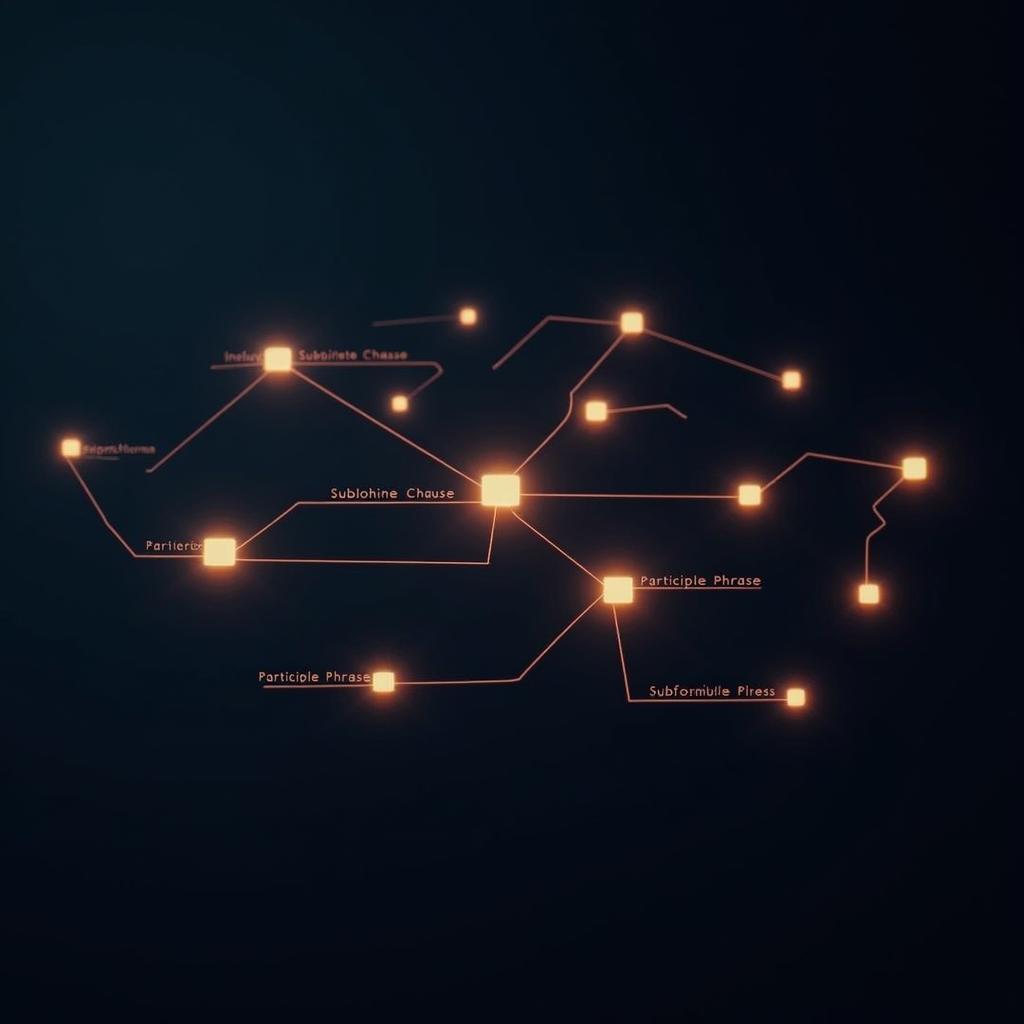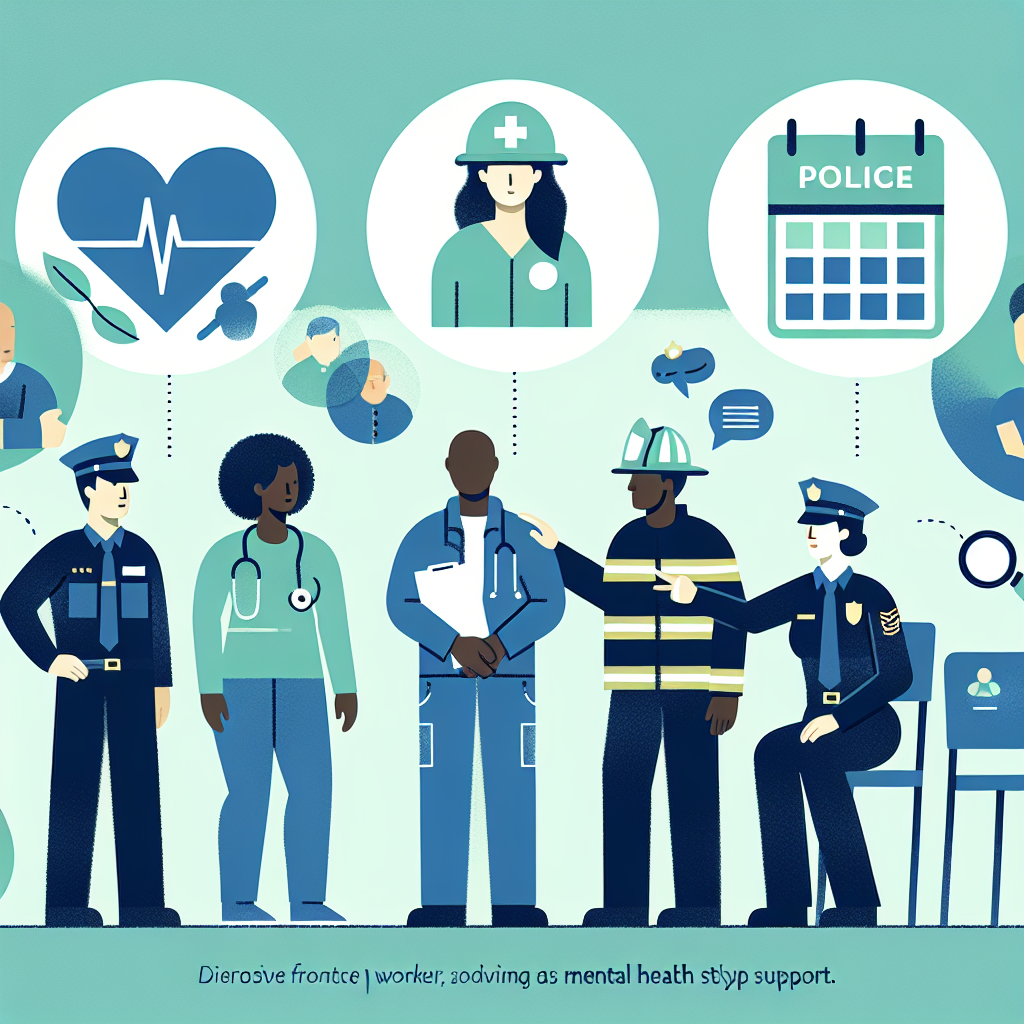Media Literacy Education (giáo dục hiểu biết truyền thông) đang trở thành từ khóa nóng trong thời đại bùng nổ mạng xã hội, tin giả và nội dung thao túng. Chủ đề này xuất hiện thường xuyên trong IELTS Writing Task 2 dưới nhiều biến thể: từ tác động của tin tức, vai trò của nhà trường trong dạy học tin tức, đến việc học sinh nên hay không nên học kỹ năng số. Trong bài viết này, bạn sẽ nhận được:
Nội dung bài viết
- 1. Đề Bài và Phân Tích
- 2. Bài Mẫu Band 8-9
- Phân Tích Band Điểm
- Tại Sao Bài Này Đạt Điểm Cao
- 3. Bài Mẫu Band 6.5-7
- Phân Tích Band Điểm
- So Sánh Với Bài Band 8-9
- 4. Bài Mẫu Band 5-6
- Phân Tích Band Điểm
- Học Từ Những Lỗi Sai
- Cách Cải Thiện Từ Band 6 Lên Band 7
- 5. Từ Vựng Quan Trọng
- 6. Cấu Trúc Câu Điểm Cao
- 7. Checklist Tự Đánh Giá
- Kết bài
- 3 bài mẫu Band 5-6, 6.5-7, 8-9 đúng độ dài, đúng cấu trúc Task 2
- Phân tích chấm điểm theo 4 tiêu chí chính thức
- Chiến lược triển khai ý, từ vựng học thuật, cấu trúc câu ghi điểm
- Checklist tự đánh giá và mẹo quản lý thời gian
Một số đề thi/đề luyện tập uy tín về media và giáo dục đã được xác minh:
- News editors decide what to broadcast on television and what to print in newspapers. What factors influence these decisions? Do we become used to bad news? Would it be better if more good news was reported? (Nguồn: ieltsliz.com – đề luyện tập phổ biến)
- Some people think that children should study the news at school, while others believe it is a waste of time. Discuss both views and give your opinion. (Nguồn: ielts-blog.com – tổng hợp đề thi gần đây)
- The influence of news media on people’s lives is increasing. Some think this is a negative development. To what extent do you agree or disagree? (Nguồn: ieltsliz.com – topic thường gặp)
1. Đề Bài và Phân Tích
“Media literacy education should be a compulsory subject in secondary schools to combat misinformation. To what extent do you agree or disagree?”
Dịch đề: “Giáo dục hiểu biết truyền thông nên là môn bắt buộc ở bậc trung học để chống lại thông tin sai lệch. Bạn đồng ý hay không đồng ý ở mức độ nào?”
Phân tích đề bài:
- Dạng câu hỏi: Opinion (Agree/Disagree). Bạn có thể:
- Hoàn toàn đồng ý/không đồng ý
- Phần nào đồng ý (balanced view)
- Thuật ngữ quan trọng:
- Media literacy education: giáo dục hiểu biết truyền thông (kỹ năng phân tích, đánh giá nguồn tin, nhận diện thiên kiến, xác minh thông tin)
- Compulsory subject: môn học bắt buộc
- Misinformation: thông tin sai lệch (khác “disinformation” là sai lệch cố ý)
- Lỗi thường gặp của học viên Việt Nam:
- Lệch trọng tâm sang “social media addiction” mà quên “compulsory” và “to combat misinformation”
- Ví dụ mơ hồ, thiếu cơ chế “how” (dạy gì, đánh giá ra sao)
- Dùng từ “disinformation/misinformation” lẫn lộn
- Sai mạo từ, thiếu “the” với “the media”, sai thì khi nêu thực trạng/giải pháp
- Cách tiếp cận chiến lược:
- Xác định lập trường rõ ràng ngay mở bài
- Body 1: Lý do ủng hộ (hiệu quả kỹ năng, tác động xã hội)
- Body 2: Phản biện các lo ngại (quá tải chương trình, chi phí) + giải pháp triển khai (cross-curricular, teacher training, assessment)
- Kết: Khẳng định lập trường và điều kiện thực thi
2. Bài Mẫu Band 8-9
Giới thiệu: Bài Band 8-9 cần lập trường rõ ràng, phát triển ý sâu, ví dụ cụ thể, từ vựng chính xác và liên kết mạch lạc. Dưới đây là bài 300 từ.
Bài luận:
While some argue that schools are already overloaded, I contend that making media literacy a compulsory subject in secondary education is essential to curb misinformation. Not only does it inoculate adolescents against manipulation, it also strengthens civic participation and academic integrity.
First, a compulsory programme achieves reach and equity. Optional clubs or one-off assemblies rarely build durable skills, whereas a mandated curriculum ensures that every student learns to triangulate sources, trace citations, and identify logical fallacies. When teenagers practise lateral reading—opening multiple tabs to verify claims—falsehoods spread via sensational headlines lose their grip. For instance, schools in Finland, often cited for top-tier literacy, explicitly teach students to deconstruct images, algorithms, and agenda-setting, which correlates with lower susceptibility to fake news.
Opponents worry about curriculum overload and teacher capacity. These concerns are valid, yet surmountable. Media literacy can be integrated across subjects rather than taught as a silo: history classes can analyse propaganda techniques; science can evaluate preprints versus peer-reviewed studies; language arts can dissect rhetorical devices and bias. Crucially, assessment can be performance-based—source audits, fact-checking reports, and reflective journals—rather than rote tests. With micro-credential training for teachers and curated open educational resources, costs remain manageable.
Beyond the classroom, the societal pay-off is substantial. Students who can weigh evidence are less likely to amplify rumours during crises, more likely to participate in deliberation, and better prepared for university research and the workplace. In an attention economy that rewards outrage, deliberate scepticism is not cynicism; it is a civic habit.
In short, compulsory media literacy education is both feasible and urgent: embedded across disciplines, assessed authentically, and supported by teacher training, it is one of the few scalable interventions that directly addresses the root mechanics of misinformation.
Phân Tích Band Điểm
| Tiêu chí | Band | Nhận xét |
|---|---|---|
| Task Response (Hoàn thành yêu cầu) | 8.5 | Lập trường rõ ràng và nhất quán; bao quát cả lợi ích, phản biện, và tính khả thi. Ví dụ cụ thể (Finland, lateral reading) cho thấy phát triển ý chiều sâu. |
| Coherence & Cohesion (Mạch lạc & Liên kết) | 8.0 | Mở–Thân–Kết rõ ràng; dùng logical sequencing, signposting hợp lý. Liên kết nội bộ đoạn mượt; không lạm dụng từ nối. |
| Lexical Resource (Từ vựng) | 8.5 | Từ vựng học thuật chính xác: inoculate, triangulate sources, lateral reading, agenda-setting, performance-based assessment. Collocations tự nhiên; ít/không lỗi từ vựng. |
| Grammatical Range & Accuracy (Ngữ pháp) | 8.0 | Cấu trúc đa dạng: mệnh đề quan hệ, đảo ngữ nhẹ, phân từ, mệnh đề nhượng bộ. Độ chính xác cao; không lỗi thì/đồng thuận chủ–vị. |
Tại Sao Bài Này Đạt Điểm Cao
- Mở bài có luận điểm kép mạnh và định hướng toàn bài.
- Ví dụ giàu tính “how” (triangulate, lateral reading, assessment forms) chứ không chung chung.
- Phản biện lo ngại “overload” và đưa giải pháp tích hợp liên môn, cho thấy tư duy cân bằng.
- Collocations tự nhiên: civic participation, academic integrity, attention economy.
- Cấu trúc câu đa dạng, dùng non-finite clauses và mệnh đề nhượng bộ khéo léo.
- Không sa đà định nghĩa; tập trung vào cơ chế tác động và tính khả thi.
- Kết bài nhấn mạnh “feasible and urgent” – chốt quan điểm mạnh.
 Hình ảnh học sinh trung học thực hành kỹ năng hiểu biết truyền thông để chống lại tin giả.
Hình ảnh học sinh trung học thực hành kỹ năng hiểu biết truyền thông để chống lại tin giả.
3. Bài Mẫu Band 6.5-7
Giới thiệu: Band 6.5-7 cần lập trường rõ, luận điểm hợp lý, từ vựng đủ chính xác; có thể còn hạn chế về chiều sâu ví dụ hoặc độ tinh tế lập luận.
Bài luận (270 từ):
Many people believe that teaching media literacy in secondary schools should be compulsory to handle misinformation, and I largely agree. Young people consume news through social platforms every day, but few have systematic training to evaluate what they see.
To begin with, a mandatory course would set a common standard for critical reading. Students could learn practical techniques such as checking the original source, comparing headlines from different outlets, and using fact-checking websites. If this happens regularly in class, they are less likely to share misleading posts impulsively. Moreover, learning how algorithms personalise feeds would help teenagers understand why their online world becomes an “echo chamber”, which can distort their views of reality.
However, there are reasonable concerns. Some teachers may not feel confident teaching such content, and curricula are already crowded. A realistic approach is to embed media tasks into existing subjects: for example, in literature students can analyse persuasive language in opinion pieces; in science they can distinguish peer-reviewed studies from blogs; in civics they can discuss ethical rules of sharing information. This reduces timetable pressure and avoids turning media literacy into a dry, isolated subject.
In conclusion, while implementation requires teacher training and careful planning, making media literacy compulsory is a necessary step. It equips students with tools to judge information quality and protects the wider community from the rapid spread of false claims.
Phân Tích Band Điểm
| Tiêu chí | Band | Nhận xét |
|---|---|---|
| Task Response (Hoàn thành yêu cầu) | 7.0 | Trả lời đúng trọng tâm, có quan điểm rõ và lý do hợp lý. Ví dụ cụ thể ở mức vừa phải; thiếu số liệu/case study sâu. |
| Coherence & Cohesion (Mạch lạc & Liên kết) | 7.0 | Tổ chức đoạn hợp lý, chuyển ý mượt. Một số câu nối còn chung chung; có thể thêm signposting rõ hơn ở thân bài 2. |
| Lexical Resource (Từ vựng) | 6.5 | Dùng được từ khóa như algorithms, echo chamber, peer-reviewed; đôi chỗ lặp “compulsory/mandatory” và “students”. Collocations nhìn chung tự nhiên. |
| Grammatical Range & Accuracy (Ngữ pháp) | 6.5 | Cấu trúc đa dạng vừa phải; một số câu phức còn đơn giản. Không có lỗi nghiêm trọng nhưng chưa thật linh hoạt. |
So Sánh Với Bài Band 8-9
- Chiều sâu ví dụ: Bài 8-9 nêu “lateral reading”, “performance-based assessment” và case Finland; bài 6.5-7 chỉ dừng ở kỹ thuật cơ bản.
- Phản biện: Bài 8-9 xử lý “overload” bằng giải pháp chi tiết (micro-credential, OER), bài 6.5-7 nói chung chung “teacher training”.
- Ngôn ngữ: Bài 8-9 có collocations cao cấp và ẩn dụ học thuật (“attention economy”), bài 6.5-7 vẫn tốt nhưng ít tinh tế hơn.
4. Bài Mẫu Band 5-6
Giới thiệu: Band 5-6 thường có ý tưởng hợp lý nhưng phát triển còn mỏng, liên kết rời, từ vựng đơn giản, có lỗi ngữ pháp và dùng từ.
Bài luận (255 từ):
In my opinion, media literacy should be a compulsory subject because misinformation is everywhere now. Students are easy to believe what they read on social media, so school must teach them to avoid it. If they learn this, they will not share fake news.
Firstly, a compulsory subject means all students will study it. They can learn how to check information and to read carefully. They also can learn about bias and how to against it. This is helpful for exams and also for life. Secondly, it can reduce problems in society. During pandemic, many people followed wrong advices online, which made serious results. If schools teach media literacy, people will be more careful.
However, some people say there is no time for new subjects. I think it is not a big problem. Teachers can just add some lessons in many class, like in English or history. Also, students already use phones and internet, so they will learn it fast and easy.
In conclusion, I agree media literacy education should be compulsory in secondary schools because it helps students and the community. Schools should start this soon to stop misinformation.
Phân Tích Band Điểm
| Tiêu chí | Band | Nhận xét |
|---|---|---|
| Task Response (Hoàn thành yêu cầu) | 6.0 | Có quan điểm rõ, nhưng lập luận nông, ví dụ chung chung; thiếu cơ chế triển khai và đánh giá. |
| Coherence & Cohesion (Mạch lạc & Liên kết) | 5.5 | Liên kết cơ bản, lặp ý, câu nối đơn giản. Chưa có progression rõ ràng trong thân bài. |
| Lexical Resource (Từ vựng) | 5.5 | Từ vựng đơn giản; nhiều lặp từ; collocations chưa tự nhiên. Một số dùng từ sai. |
| Grammatical Range & Accuracy (Ngữ pháp) | 5.5 | Lỗi mạo từ, giới từ, cấu trúc động từ; câu phức hạn chế; một số lỗi ảnh hưởng tự nhiên. |
Học Từ Những Lỗi Sai
| Lỗi sai | Loại lỗi | Sửa lại | Giải thích |
|---|---|---|---|
| Students are easy to believe | Collocation/Grammar | Students are easily persuaded to believe / Students tend to believe | “be easy to + V” không tự nhiên; cần trạng từ “easily” và cấu trúc phù hợp. |
| how to against it | Grammar/Word choice | how to guard against it / how to counter it | “against” là giới từ; cần động từ “guard against/counter”. |
| During pandemic | Article | During the pandemic | Cần mạo từ xác định “the” cho sự kiện cụ thể. |
| wrong advices | Uncountable noun | wrong advice / misleading advice | “Advice” là danh từ không đếm được. |
| add some lessons in many class | Number/Article/Preposition | add some lessons to many classes | Số nhiều “classes”; giới từ đúng là “to”. |
Cách Cải Thiện Từ Band 6 Lên Band 7
- Mở rộng bằng ví dụ có cơ chế: nêu kỹ thuật (lateral reading, reverse image search), cách đánh giá (rubric, source audit).
- Tăng tính phản biện: thừa nhận hạn chế và nêu giải pháp cụ thể (đào tạo giáo viên, tài nguyên mở).
- Nâng cấp collocations: evidence-based instruction, digital citizenship, algorithmic curation.
- Đa dạng cấu trúc câu: mệnh đề nhượng bộ, non-finite clauses, mệnh đề quan hệ không xác định.
- Kiểm tra lỗi mạo từ, danh từ không đếm được, giới từ thường gặp.
 Giáo viên hướng dẫn học sinh tích hợp giáo dục hiểu biết truyền thông vào các môn học khác nhau.
Giáo viên hướng dẫn học sinh tích hợp giáo dục hiểu biết truyền thông vào các môn học khác nhau.
5. Từ Vựng Quan Trọng
| Từ/Cụm từ | Loại từ | Phiên âm | Nghĩa tiếng Việt | Ví dụ (English) | Collocations |
|---|---|---|---|---|---|
| media literacy | n. | ˈmiːdiə ˈlɪtərəsi | hiểu biết truyền thông | Media literacy helps students judge information quality. | media literacy curriculum |
| misinformation | n. | ˌmɪsɪnfəˈmeɪʃn | thông tin sai lệch (không cố ý) | Misinformation spreads quickly on social media. | combat/curb/contain misinformation |
| disinformation | n. | ˌdɪsɪnfəˈmeɪʃn | thông tin sai lệch có chủ đích | Disinformation campaigns target voters. | disinformation campaign |
| bias | n. | ˈbaɪəs | thiên kiến | Detecting bias is central to critical reading. | implicit/confirmation/selection bias |
| lateral reading | n. | ˈlætərəl ˈriːdɪŋ | đọc ngang (mở nhiều nguồn để kiểm chứng) | Lateral reading reduces gullibility. | practise/apply lateral reading |
| triangulate sources | v. phr. | traɪˈæŋɡjuleɪt ˈsɔːsɪz | đối chiếu nhiều nguồn | Journalists triangulate sources before publishing. | triangulate data/evidence |
| algorithmic curation | n. | ˌælɡəˈrɪðmɪk kjʊˈreɪʃn | thuật toán tuyển chọn nội dung | Algorithmic curation creates filter bubbles. | personalised algorithmic curation |
| echo chamber | n. | ˈekoʊ ˌtʃeɪmbər | buồng dội âm thông tin | Echo chambers reinforce existing beliefs. | escape/break out of echo chambers |
| performance-based assessment | n. | pərˈfɔːrməns beɪst əˈsesmənt | đánh giá dựa trên thực hành | Schools use performance-based assessments for media tasks. | design/implement performance-based assessment |
| civic participation | n. | ˈsɪvɪk pɑːrˌtɪsɪˈpeɪʃn | tham gia công dân | Media literacy supports civic participation. | active/meaningful civic participation |
| evidence-based | adj. | ˈevɪdəns beɪst | dựa trên bằng chứng | Evidence-based instruction improves outcomes. | evidence-based policy/practice |
| agenda-setting | n. | əˈdʒendə ˈsetɪŋ | định hướng chương trình nghị sự (truyền thông) | Agenda-setting shapes public priorities. | media agenda-setting |
| to what extent | linker | tə wɒt ɪkˈstent | ở mức độ nào | To what extent do you agree? | to a large/small extent |
| while/whereas | linker | waɪl / weəˈræz | trong khi (đối lập) | While some worry about overload, others see benefits. | while others argue |
| not only… but also | linker | nɒt ˈəʊnli bʌt ˈɔːlsəʊ | không chỉ… mà còn | Not only does it teach skills, but it also builds habits. | inversion with not only |
Lưu ý phát âm: chú ý âm /ˈlɪtərəsi/ (literacy), /ˌælɡəˈrɪðmɪk/ (algorithmic). Học theo cặp từ gần nghĩa: misinformation vs disinformation.
6. Cấu Trúc Câu Điểm Cao
- Câu phức với mệnh đề phụ thuộc
- Công thức: Mệnh đề chính + while/although/even though + mệnh đề phụ
- Ví dụ từ Band 8-9: While some argue that schools are already overloaded, I contend that making media literacy compulsory is essential.
- Vì sao ghi điểm: Tạo đối lập mạch lạc, thể hiện tư duy cân bằng.
- Ví dụ bổ sung: Although resources are limited, schools can integrate media tasks. Even if teachers are busy, micro-training can help.
- Lỗi thường gặp: Dùng “despite/although” lẫn lộn; “despite” + V-ing/N, không đi với mệnh đề.
- Mệnh đề quan hệ không xác định (non-defining)
- Công thức: Danh từ, which/who + mệnh đề, …
- Ví dụ: Finland explicitly teaches algorithms, which correlates with lower susceptibility to fake news.
- Ghi điểm: Bổ sung thông tin học thuật mượt.
- Ví dụ: This approach, which emphasises practice, is scalable. The curriculum, which is cross-disciplinary, reduces overload.
- Lỗi: Quên dấu phẩy; dùng sai “that” trong mệnh đề không xác định.
- Cụm phân từ (participial phrases)
- Công thức: V-ing/V-ed + cụm, mệnh đề chính
- Ví dụ: Opening multiple tabs to verify claims, students weaken the pull of clickbait.
- Ghi điểm: Nén ý, tăng nhịp điệu học thuật.
- Ví dụ: Integrating tasks across subjects, schools save time. Designed carefully, assessments reflect real skills.
- Lỗi: Sai chủ ngữ logic (dangling participle).
- Câu chẻ (Cleft sentences)
- Công thức: It is/was + X + that/who + mệnh đề
- Ví dụ: It is compulsory provision that ensures equity, not optional clubs.
- Ghi điểm: Nhấn mạnh luận điểm chính.
- Ví dụ: It is teacher training that unlocks feasibility. It is performance-based assessment that drives deep learning.
- Lỗi: Dùng quá nhiều gây nặng nề.
- Câu điều kiện nâng cao
- Công thức: If + mệnh đề, mệnh đề; hoặc In the event that / Provided that / Unless
- Ví dụ: Provided that teachers receive micro-credentials, integration is realistic.
- Ghi điểm: Nêu điều kiện triển khai thực tế.
- Ví dụ: Unless assessment changes, skills remain superficial. In the event that budgets are tight, use OER.
- Lỗi: Sai thì ở mệnh đề điều kiện; lẫn lộn unless và if…not.
- Đảo ngữ
- Công thức: Not only + trợ động từ + S + V, but also…
- Ví dụ: Not only does it inoculate adolescents, but it also strengthens civic participation.
- Ghi điểm: Nhấn mạnh, tạo nhịp.
- Ví dụ: Hardly had the term begun when schools faced hoaxes. Rarely do students question algorithmic feeds without guidance.
- Lỗi: Quên đảo trợ động từ; sai thì.
 Sơ đồ minh họa các cấu trúc câu phức tạp và học thuật giúp đạt điểm cao trong IELTS Writing.
Sơ đồ minh họa các cấu trúc câu phức tạp và học thuật giúp đạt điểm cao trong IELTS Writing.
7. Checklist Tự Đánh Giá
- Trước khi viết:
- Xác định dạng câu hỏi (agree/disagree, discuss)
- Chốt lập trường một câu rõ ràng
- Lập dàn ý: 2 lý do chính + 1 phản biện + giải pháp
- Ghi sẵn 5 collocations chủ đề Media literacy education
- Trong khi viết:
- Mỗi đoạn 1 ý chính, có ví dụ/cơ chế how
- Dùng 1-2 cấu trúc nâng cao/đoạn
- Kiểm soát từ nối: therefore, however, meanwhile, notably
- Sau khi viết:
- Quét lỗi mạo từ (a/an/the), số ít–số nhiều, giới từ (in/on/for)
- Kiểm tra consistency: compulsory vs optional, misinformation vs disinformation
- Cắt lặp từ; thay bằng collocations
- Mẹo thời gian:
- 2-3 phút phân tích đề + outline
- 25-28 phút viết
- 4-5 phút rà soát lỗi và từ vựng
- Ưu tiên hoàn chỉnh 4 đoạn chuẩn hơn là thêm ý rời rạc
Kết bài
Media literacy education không chỉ là xu hướng; đó là năng lực cốt lõi giúp người học tự bảo vệ trước tin giả và tham gia xã hội một cách có trách nhiệm. Trong khuôn khổ IELTS Writing Task 2, chủ đề này kiểm tra khả năng lập luận, phản biện và đưa ra giải pháp thực tiễn. Bạn đã có 3 bài mẫu theo dải band 5-9, bảng từ vựng, cấu trúc câu và checklist hành động. Con đường cải thiện rõ ràng: luyện outline, triển khai cơ chế “how”, nâng cấp collocations và đa dạng cấu trúc câu. Hãy chọn 1 đề trong bài, viết lại theo dàn ý của bạn, rồi đối chiếu với checklist ở trên. Thời gian cải thiện thực tế cho Task 2 thường 4-6 tuần luyện đều, mỗi tuần 2-3 bài kèm phản hồi.
Nếu bạn muốn mở rộng, hãy xem thêm các chủ đề liên quan: [internal_link: task-2-structure], [internal_link: linking-words], [internal_link: paraphrasing]. Chia sẻ bài viết của bạn và câu hỏi ở phần bình luận để mình góp ý chi tiết và giúp bạn lên band điểm mục tiêu.


